#Langley Air Force Base
Explore tagged Tumblr posts
Text
3 notes
·
View notes
Text
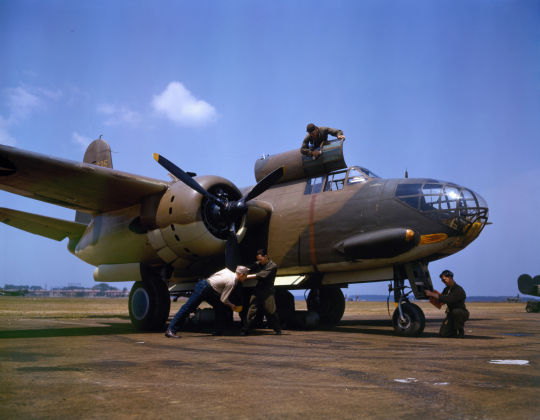
Douglas A-20C Havoc en cours de maintenance à la base aérienne de Langley – Virginie – Etats-Unis – Juillet 1942
Photographe : Alfred T. Palmer
©United States Library of Congress - LC-USW36-203
#WWII#united states army air forces#usaaf#aviation militaire#military aviation#avion d'attaque au sol#ground-attack aircraft#bombardier#bomber#bombardier moyen#medium bomber#chasseur de nuit#night fighter#douglas a-20 havoc#a-20 havoc#havoc#base aérienne de langley#langley field#langley#virginie#virginia#états-unis#usa#07/1942#1942
93 notes
·
View notes
Text

Mercury Seven astronauts at Langley Air Force Base, 1960. Photo by Ralph Morse.
223 notes
·
View notes
Text

✶ Weren't for the wind - Jake Seresin x OC ✶
Warnings: Story will contain situations involving arranged marriage, sexism, cursing, verbal and emotion abuse, sexual content, mentions of drugs and alcohol, miscarriages, etc.
A/N: So this is an idea i've had swirling around in my head for some time and I wanted to see how you all like it! I of course used an Ella Langley song because I feel like they go perfectly with any Glen fic! This one will be a little dark and heavy at times due to the nature. I'm loosely basing it off of the show Landman (very loosely)! There's gonna be a little mention of Top Gun but Jake is now out and back to Texas. Let me know what you think and if you would like to be tagged!

“If it weren’t for me signing that contract, you wouldn’t have the life you have today!” Jake’s fingers hastily ran through his growing hair, his voice rising with frustration. “You think you’re the one who made me who I am today? I never saw your ass out there at the crack of dawn drilling those holes and making sure no one got hurt or killed. You’ve got no idea what it took to build this empire.”
“Well, that’s funny because I never saw you out there either,” I shot back, my voice dripping with sarcasm. My arms crossed tightly over my chest as I stepped closer to him, my eyes locked on his. “You simply sat up there in your nice, cozy office with your pretty blonde secretaries while others made the money for you. I got you to where you are today, sweetheart. Don’t you dare forget that.”
Jake’s jaw tightened, his eyes narrowing. “Oh, so now you’re the brains behind it all? That’s rich. You think a few dinners and handshakes make you the mastermind? You were just the pretty face I brought along to seal the deal. Nothing more.”
My hands clenched into fists at my sides, the sting of his words cutting deeper than I cared to admit. “For a minute there, I actually thought this would work out,” I said, my voice quieter now but no less sharp. “I thought I could see myself being married to you for the rest of my life. But it’s apparent you only cared about the money and fame. You’ve got everyone from here to the Middle East trying to grab your attention, and I’m just the little old housewife who was forced to marry your dumb ass so you could set your claim to those grease pits sitting below our feet.”
Jake’s expression faltered for a moment, a flicker of something—guilt? regret?—passing across his face. But it was gone as quickly as it came. “Forced to marry me?” he scoffed. “Don’t act like you didn’t get something out of this too. You wanted the lifestyle, the security. Don’t pretend you’re some innocent victim here.”
I took a step back, my chest tightening. “You’re right,” I said, my voice trembling now. “I did want those things. But I also wanted you. Or at least, I thought I did. I thought there was more to you than the suits and the boardroom meetings. But I was wrong. You’re just hollow, Jake. All this wealth, all this power—it’s just a mask for the emptiness inside you.”
The room fell silent, the weight of my words hanging in the air between us. Jake stared at me, his face unreadable. For a moment, I thought he might say something—anything—to break the tension. But instead, he turned away, his shoulders stiff.
“You don’t know me,” he said finally, his voice low and cold. “You never did.”
“Maybe not,” I replied, my voice barely above a whisper. “But I know enough to realize this isn’t what I want anymore.”
#jake seresin#glen powell#glen powell imagine#glen powell smut#glen powell fanfic#glen powell x reader#jake seresin fic#jake hangman seresin#jake seresin fanfiction#jake seresin x oc#hangman seresin#Spotify
63 notes
·
View notes
Text

F-22 Demo Team Sharpens Skills with Precision Flight Practice
U.S. Air Force Capt. Nick “Laz” Le Tourneau, F-22 Raptor Aerial Demonstration Team commander, executes an aerial maneuver at Joint Base Langley-Eustis Virginia, June 13, 2025. This practice highlighted the aircraft’s advanced flight control systems and supermaneuverability that is demonstrated across the country. (U.S. Air Force photo by Senior Airman Adisen Smith)
18 notes
·
View notes
Text
To the best of my ability, I have plotted out all the locations in Spies Are Forever. Originally, this started as me just trying to figure out where Agent Curt Mega would be in terms of alcohol withdrawal (see this post) over the course of the story, but (shocker) I got a little bit carried away. I think I have all the locations, distances, and estimated travel times, but its definitely possible I missed something!
A1P1-- Russian Weapons Facility
Songs: Spies Are Forever, The Coldest Goodbye
For reasons I will explain later, I believe this to be a Soviet Air Force base called Smurav'yevo. This is a former "closed city," meaning it did not appear on maps and entrance was restricted to people who worked on the site (think Los Alamos during The Manhattan Project). According to the NRDC, it was both an airfield and a storage facility for nuclear warheads, located in Pskov Oblast, Russia.

I did not calculate distance and travel time between A1P1 and A1P2, because of the four year time skip
A1P2- A1P3-- Budapest, Hungary
Songs: Spy Again, Somebody's Gotta Do It
Assuming that A.S.S. is functionally the CIA, I've put it in Washington DC. Technically the CIA is in Langley, but I think DC is the closest airport?
The distance from Budapest to Washington DC is 4,555 miles, or 7,330 kilometers, with an estimated flight time of 11 to 15 hours.

A1P4- A1P5-- Washington DC
Songs: Eyes on the Prize I, Pay Attention, Barb's Lament
The distance from DC to Monte Carlo, Monaco is 4,195 miles or 6,751 kilometers, with an estimated flight time of 10 to 12 hours

A1P6- A1P8-- Monte Carlo, Monaco
Songs: Eyes on the Prize II, Not So Bad, Torture Tango
The distance from Monte Carlo to Gevena is 181 miles or 292 kilometers, with an estimated flight time of 1 to 4 hours.
(this is driving directions but just to give you a sense of the trip)

A2P1-- Geneva, Switzerland
Song: We Love the Prince
The distance from Geneva to La Désirade is 4,348 miles or 6,998 kilometers, with an estimated flight time of 12 to 15 hours

A2P2-- La Désirade, Guadeloupe
Songs: Prisoner of My Past, Doing This
This is where things get interesting! From La Désirade, Curt and Tatiana travel to the New Democratic Republics of Old Socialist Prussian Sloviskia, which is not a real place. However! If we were to attempt to map it onto a real world location, I have a proposal. I believe a good candidate for the location of Prussian Sloviskia is Estonia
(Eastern Europeans please feel free to destroy me if I mess this up!)
From the name, I think it's safe to assume that Prussian Sloviskia is meant to be a former Eastern Bloc country. That it was once part of the USSR (Union of Soviet Socialist Republics) and has now declared independence. Now leaving aside the fact that in the real world this dissolution didn't start happening until 1989-1990, this means Prussian Sloviskia would be located somewhere in this area
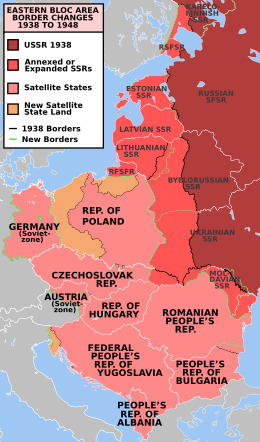
Given that the chase scene in One Step Ahead takes us from Prussian Sloviskia to Russia via motorcycle, boat, and hangglider, I have to assume that it shares a border with Russia. Estonia and Latvia seem like the frontrunners to me. Because of One Step Ahead, we know that somewhere between Prussian Sloviskia and the Russian Weapons Facility, they use boats and cross a body of water, so that indicates Estonia
A2P3-A2P5-- New Democratic Republics of Old Socialist Prussian Sloviskia
Songs: One More Shot, Not So Bad (Reprise)
Estonia's capital, Tallinn, does actually have a weapons museum! However, with the order of motorcycle, boat, weapons museum, hangglider, to get from Tallinn into Russia they'd have to be hanggliding for like 3 to 4 hours (and that's assuming the hangglider is as fast as a car), which seems a bit much
I propose that the capital of Prussian Sloviskia is located roughly around the area of Tartu, Estonia. Curt and Owen do the motorcycle chase from Tartu up to Kallaste. Assuming they follow traffic laws (they don't) that would take about 42 minutes

Someone else in the fandom (I'm so sorry I can't remember who!!) used who Cynthia is talking to in her scenes to prove that the 1961 portion of Spies takes place in mid to late January. I could have plotted a different route where they quickly cross the Narva River, but instead I took them to one of the wider parts of Lake Peipus, because it seems like it has the least chance of being frozen over and unusable by boat
From Kallaste, they speedboat across Lake Peipus, which would be an estimated travel time of 1 hour and 21 minutes, crossing into Russia and ending up in Gdov

A2P6-- Pskov Oblast, Russia
Songs: One Step Ahead, The Coldest Reprise (Staircase Reprise)
If I understand correctly, Gdov is a town in the district of Gdovsky, and at the north eastern end of Gdovsky, we find the Smurav'yevo Air Force base

So for our purposes there would be a fictional International Weapons Museum somewhere between Gdov and Smurav'yevo. Curt and Owen fight, and then they take a short hangglider trip to Smurav'yevo

And finally, the distance from Smurav'yevo back to Washington DC is 4,444 miles or 7,152 kilometers. The closest airport I could find is Moscow, so that leaves us with an estimated travel time of 10 to 12 hours
A2P7-- Washington, DC
Song: Spy Again (Reprise), Spy Dance
I'm just some guy on the internet, and I did the songs by memory, so it's very possible I missed something. But I found this very interesting, so I figured I might as well share it with my friends!
#also this didnt factor into the selection process. but as I was looking things up I kept seeing Estonia called the Silicon Valley of Europe#which (despite not having significant stores of pure unmined natural silicon) was pretty funny to me#tin can bros#spies are forever#owen carvour#agent curt mega#saf#tcb#saf analysis
29 notes
·
View notes
Text
Fifty years ago today
youtube
The fight for gay equality in the military is first brought into American living rooms by "CBS Evening News" legend Walter Cronkite introducing an interview with the first servicemember to challenge the ban, Leonard Matlovich. Though Leonard was an experienced public speaker, he seems shy and uncertain in the brief interview because it was both his first appearance on national television and because he had such short notice that the interview was going to happen. After the story of his unprecedented test case broke that morning on the front page of the "New York Times," he got a call that CBS had chartered a plane to fly to Hampton, Virginia, where he was stationed at Langley Air Force Base, to interview him. And, also because of what was happening behind the scenes that CBS, and the world at that time, didn't know. He had immediately called his mother in Florida to tell her that they finally had to tell his conservative Air Force vet father the two things he hadn't yet been told: that his only son, winner of a Purple Heart and Bronze Star, was gay AND threatening to sue his beloved Air Force. He was shocked when his mother told him that it was too late. A syndicated version of the NYT's story had appeared in their local morning paper. His father read it, locked himself in his bedroom in which he cried for two hours, and, after exiting, never wavered in his support for Leonard. When next they met, he hugged his son for the first time since Leonard had been a child.
Source: www.leonardmatlovich.com
One of the aspects of this story which really struck me is the way that his father, a military man himself, was eventually able to recognise his son's moral courage.
Later in the year Matlovich reflected on this experience in a longer interview with Ronald Gold.
14 notes
·
View notes
Text
41 notes
·
View notes
Text

EF-111 also known as the Spark Vark.
#OneElevenWednesday
January 1995, Langley Air Force Base
Joint Task Force Exercise 95-2
National Archive DF-ST-97-01182
@tcamp202 via X
#ef 111 raven#general dynamics aviation#electronic warfare#aircraft#usaf#aviation#cold war aircraft#grumman aviation
30 notes
·
View notes
Note
This sounds weird but I am trying to write a book set in the UK and the main character works with MI5 or MI6 when they’re contacted by someone working within the Pentagon… what would be a good choice to have them work for as I am not American and don’t have a clue about who works at the Pentagon.
I’m not sure that the Pentagon is the right source! The US equivalent to MI5 is actually the FBI (aka the J. Edgar Hoover Building) and the US equivalent to MI6 is the CIA (aka Langley). Do note that the CIA isn’t allowed to operate on US soil and the FBI can only work within the US. (The lines do get blurred from time to time but that is mostly the rule.)
The Pentagon is the administrative headquarters for the Department of Defense. So working at the Pentagon is the Office of the Secretary of Defense (OSD), the military branches (Army, Air Force, Navy, Marines, and Space Force), and what we in the biz call “the fourth estate,” which are all the policy shops, admin functions like HR and payroll, research and engineering, acquisitions and logistics, etc. - so program managers, policy advisors, scientists, engineers, researchers, analysts, that kind of thing.
The military does have their own intelligence agency, called the Defense Intelligence Agency (DIA), which handles combat support and foreign military intelligence. They’re part of the Pentagon in the sense that they’re DOD and part of the Joint Chiefs, but they’re not physically located at the Pentagon. Their headquarters are across the city at Joint Base Anacostia-Bolling.
So for me, I think that’s where your Pentagon source needs to be if they’re contacting British intelligence agencies - part of DIA or the Joint Chiefs. But you can always take creative/editorial liberties in the end, and tell the story you want to tell!
10 notes
·
View notes
Text
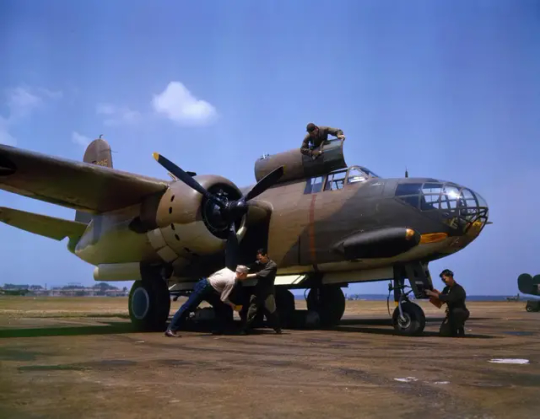
Douglas A-20C Havoc undergoing maintenance at Langley Air Force Base, Virginia. July 1942
20 notes
·
View notes
Text
This is real. This is a cybersecurity, law, policy, and roles and missions of the Federal Government. This is not a technology issue on how to take them down - that's easy.
Oct 15, 2024
A complex swarm of drones wanders at will over the largest American National Security Joint Base cluster. Langley Air Force Base, Ft. Eustis (now a joint base with Langley), Yorktown Naval Weapons Station, Norfolk Naval Station, Norfolk Naval Air Station, Little Creek Amphibious Base, Oceana Naval Air Station, Dam Neck Annex (Seal Team 6), etc. etc. etc.
This cluster of bases in Virginia is the largest single concentration of U.S. Military resources, units, and equipment. And someone just flew a drone swarm for 17 days as the Department of Defense and the Inter-Agency process went bonkers.
Step 1 on any new, complex, national security issue is answering this question: Who will be the lead Department or Agency to address the developing crisis?
I’m sure the Eisenhower Executive Office Building, the National Security Council, and the National Military Command Center were doing Cheetah Flips and Flap-Exs on steroids to answer this question. Well the threat actor flew for 17 days with no interruption.
Apparently they are inside our OODA-Loop and our inter-agency process is not fast or agile enough to take action.
Not good at all. Was it China or Iran? Likely
27 notes
·
View notes
Text
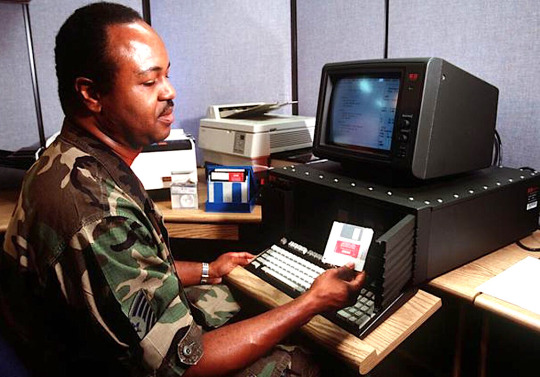
Master sergeant Gregory E. Settles uses a UKY-83 desktop computer in the combat communications center at Langley Air Force Base to convey information during Operation Desert Storm, 1991.
67 notes
·
View notes
Text
Longlegs Filming Locations
Here are all the filming locations from Longlegs I've been able to scene stalk. I made a video about it if you'd prefer to listen to me say "uh..." a hundred times: https://youtu.be/NQrdn4czh-c . But listing them in a blog allows search engines to find them so the info can be better dispersed. I'll give the locations roughly in the order they appear in the film. I can only post so many images, so I'll just have to give addresses for some places without a pic.
Needless to say, SPOILERS AHEAD.
The significant locations I can't find are the Bar, Harker's cabin, The Green Murder House, & the paint/hardware store.
Should you choose to visit any of these locations, these are all private property - do not trespass or harass. Stay on the street / sidewalk for those selfies. The library is the sole public property exception as it is a local government building. So feel free to visit it during normal business hours. I'm sure the librarians would be happy to take a few minutes to tell tales of the filming.
Ruth's house:

This is the first location to appear & the last I found. It's actually a wedding venue that's part of a golf course located at 3834 248 St, Langley Twp, BC V4W 2B3, Canada. Here's a google maps view:

Everything that occurs in & around Ruth's house takes place on this property, with the likely exception of the basement, which I don't think was here as this small house doesn't seem to have a basement with a window as is shown in the film.
FBI office, morgue, insane asylum, 5 matching houses, & jogging garage:

In the end credits they list Salish Locations "The Garrison" so this was an easy find. Salish Locations is a company that owns a number of locations they rent to film productions companies, so Longlegs made heavy use of "The Garrison" located at 4050 W 4th Ave, Vancouver, BC V6R 1Z6, Canada. You can find their location website here: https://www.salishlocations.com/locations.html
This is an old military base, perhaps air force?, but the Longlegs production team made heavy use of it. Every scene that takes place at the FBI office was filmed here, as well as the insane asylum, the morgue, the 5 matching houses, the jogging garage, & possibly the basement from Ruth's house (that last one is just a guess).

Although the exact rooms they used in the film are not the ones shown on the website, they are similar enough that you can clearly see they shot in that wing of the building. The exposed sprinklers on the ceiling, the hanging fluorescent lights, the wall heaters, & wood paneling all match up.
For a low budget film, this location was a boon to the film company, I'm sure, as it served as their production studio for a greatly reduced cost.
Serial Killer Condos:
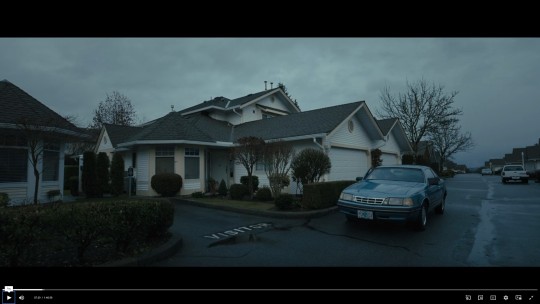
This was a pain in the ass to find as every other 2-level condo complex in the Vancouver metro looks the same, but I managed. It's called Spencer Green located at 21138 88 Ave, Langley Twp, BC. As it is private property, Google couldn't street view inside it, but by standing just outside one of the entrances, you can match up the unique structural elements such as the round vents by the gables, the dual chimney pipes, & the mini-tower bay window extension.

The 5 Houses:

After Harker gets her psychic test at the FBI, we get the scene with her, Agent Carter, & Agent Browning sitting in a car in front of the location of a Longlegs killing which is one of 5 duplicate houses. This is part of "The Garrison" at 3926-3932 Ortona Crescent, Vancouver, BC. There is an exact match for this location in the Salish Locations website photos:

Agent Carter's House:

After the agents leave the bar I can't find, Agent Harker drives Agent Carter back to his house (the image above is from later in the film just because it's daylight & you can see the location better). Now, I didn't think I'd ever find this, but sometimes I luck out. Again, we need to jump way ahead because I found this house via this brief scene at the end of the film where Ruth gets shot at Agent Carter's house. She's sitting in front of a window that gives a clear view of the houses across the street:

One of which is orange. And just by dumb luck, while I was looking for something else, I stubbled across the orange house when I was street crawling. Here's the same view on google maps:

Which makes Carter's house the one across the street at 2340 204a St, Langley Twp, BC. We never really get a good view of Carter's house, so I'll just match up with the image above of Harker in her car sitting in Carter's driveway:

The Library:

After Harker leaves the green murder house (which I can't find), Harker goes to the world's coolest library to do some demonic research & as luck would have it, they used a real library. Just over Harker's right shoulder, in the distance & out of focus, is what looked to me like a large clock face. And in this next image, we get a good look at a very distinct carpet pattern on the floor:

So, assuming this was a real library, I just checked which ones in the Vancouver, Langley Township, & Maple Ridge had clocks near them. The main library branch in Maple Ridge at 22470 Dewdney Trunk Rd, Maple Ridge, BC, has a clock just to the east in perfect line of shot. Then I found an online image of the interior to match the carpet, plus I emailed the library to confirm that Longlegs filmed there, & they confirmed it. Below is the same exact location where Harker is sitting, just during the day & showing the carpet.

Camera House:

Next, Harker & Carter head off to the Camera house, the only one of Longlegs' murders to have a survivor, Carrie Ann Camera. This location was also a pain to find because it's located in an area google doesn't yet have in 3D view, so I had a devil of a time matching it up, but it's located at 2420 256 St, Aldergrove, BC at the end of a long driveway:
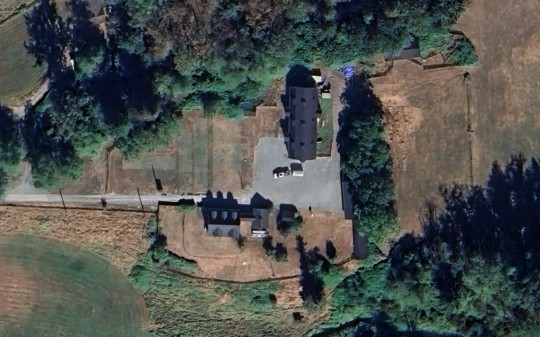
The Morgue:

Harker & Carter take the doll they find in the Camera barn back to the FBI lab/morgue to examine it. This is somewhere in the basement of the Salish Garrison building & I can match it up with a similar room, possibly the same room with the windows covered:

Insane Asylum:

Harker & Carter then head off the the insane asylum to interview Carrie Ann Camera & this is also shot in the Salish Garrison & I have shots of the very room they used, which is an "L" shaped room with an accordion blind at one end. Above we see Carrie Ann's shots & below are Harker's shots. For Harker, you can clearly see the accordion blind drawn closed behind her:

And here are shots of those locations, although the camera is angled 90 degrees from Carrie Ann's location:


Jogging Garage:

After a long series of locations I've already gone over, Harker meets up with Carter while he's jogging my this garage above, which is also at the Salish Garrison site:

Longlegs Surrenders:

I'm really proud of finding this spot because I lined up the friggin mountains in the background as well as a building off to the right (not visible in the above image) to match it up. It's located on a street that runs the Canada/US border at precisely 49°00'08.3"N 122°29'45.4"W. The camera is facing south here & if Nick Cage so much as takes one step back, he'd be standing in the US.

Interrogation room:

I don't have an exact match for the interrogation room, but I know it's inside the Salish Garrison because of the exposed sprinklers & hanging fluorescent lights match, plus, when they open the door, you can see the below hallway, which is definitely in the Garrison building.


Then there are a couple of quick driving scenes, one when Longlegs leaves the paint/hardware store that takes place at 49°00'08.3"N 122°30'43.7"W with the camera facing north - I matched up the barn & a green building that was torn down shortly after they finished filming, & a couple of scenes where longlegs & then Harker drive by some equestrian fencing & enter a wooded area which is at 49°14'19.5"N 122°31'34.4"W with the camera facing west & south west.
I thought Harker's cabin would for sure be the cabin in North Vancouver that everyone uses for everything, but they don't match up.
If you happen to know where the bar, Harker's cabin, the green murder house, or the paint / hardware store are located, please leave a comment here, or on the youtube video, & if I can confirm, I'll add the location to this & credit you for your find. :-)
-creaturesfromelsewhere 2-14-2025 (this is what single people do on Valentine's day)
13 notes
·
View notes
Text
Mysterious Drone Fleet Breaches U.S. Military Airspace for 17 CONSECUTIVE DAYS Without Deterrence | The Gateway Pundit | by Jim Hᴏft
14 notes
·
View notes
Text

An F-22 Raptor assigned to the 27th Fighter Squadron, Joint Base Langley-Eustis, Va., takes off during the 2023 William Tell Air-to-Air Competition at the Savannah Air National Guard base in Savannah, Ga., Sept. 11, 2023. The return of William Tell signifies not only a celebration of the past but also a testament to the future of air superiority. U.S. Air Force photo by Senior Airman Zachary Rufus
14 notes
·
View notes